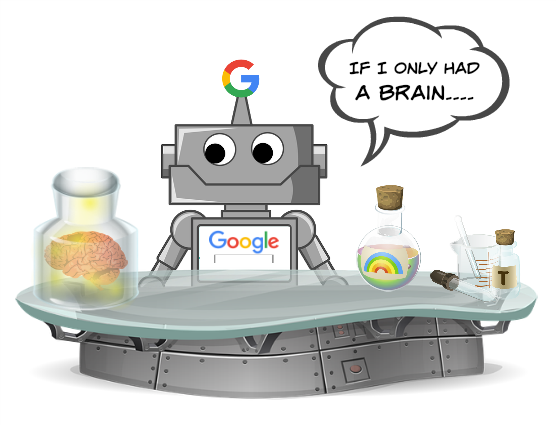
What is RankBrain?
RankBrain is a major component of Google’s Hummingbird search algorithm (the one that deals with Latent Semantic Indexing AKA “Things Not Strings”) and, though first announced in October 2015, is said by Google to have been operating live since early 2015 before it was made public knowledge.
Greg Corrado, a senior research scientist at Google and co-founder of their deep learning team, has said:
“In the few months it has been deployed, RankBrain has become the third-most important signal contributing to the result of a search query.”
RankBrain uses AI (artificial intelligence), specifically machine-learning, to rank webpages in Google’s search index by interpreting complex, ambiguous queries and using historically learned pattern recognition to understand them. It is important to note that RankBrain doesn’t affect all search queries typed into Google as Hummingbird does, but instead focuses on unfamiliar phrases and never-before-seen search queries. Google has yet to give any specific figure other than “a very large fraction” in regards to the number of affected searches – but we do know that never-before-seen phrases comprise approximately 15% of all queries searched in Google!
RankBrain is especially important now in an age where we talk in complex phrases to our mobile devices in order to ask a simple question, instead of typing simplified keywords that summarise the information we are looking for. For example, Greg Corrado goes on to say that when you “talk to Google like it is a person, RankBrain can kind of generalise and say ‘oh well, that phrase seems somewhat like something I’ve seen in the past so I’m going to assume that you mean this'”. And, as it is a machine-learning component of Google’s algorithm, the more queries RankBrain processes the smarter it will get in inferring meaning from what we search.
What can we do to optimise for RankBrain?
As with everything else Hummingbird has taught us, we need to be creating content for users not bots! There’s nothing new that we should specifically be doing that we weren’t doing before. All RankBrain is doing is providing better results than before, improving the existing features of Hummingbird.
One thing that has recently stood out to me in relation to RankBrain is a quote from Andrew Howlett, CTO of Rain Agency, when asked about Google’s AI algorithm update:
“Customers providing reviews use real language and say it in ways that people might also ask a question through Google. For example, in a review, someone might say, ‘This place has the best chips and salsa anywhere that doesn’t cost a fortune.’ That sentence will help now with someone who is searching for something like, ‘I’m on a budget, where’s a good restaurant with awesome chips and salsa?'”
“Real language”. Google’s AI is going to get extremely clever, far cleverer than it already is, when it comes to making the connections between semantically similar language e.g. “doesn’t cost a fortune” and “I’m on a budget”. And, as Andrew Howlett rightly said, user reviews are a source of honest, real, human language. We might not necessarily want to include actual copy on our websites targeting users looking for cheap food, but if users were to commend the restaurant for its low prices we’d be thrilled that they were creating new opportunities for our page to rank in Google for price-related queries. And user reviews have a lot of weight to them as they are genuine human feedback.
Though RankBrain hasn’t changed how we should be approaching user-friendly SEO, it should serve as a wake up call to those who have yet to adjust their SEO strategies to suit this modern age of how users search. A good search marketer who has stayed on top of the industry trends over the years shouldn’t have to change anything. And for those SEO practitioners looking to improve their websites, you always have to stay on your toes coming up with new ideas for multiple points of entry to each single webpage. User generated content allows pages the ability to rank for things that you might not have even given thought to. It’s essentially users helping out other users by helping out the webpage.
Typically in “old-school SEO” from years ago, we would create a range of different landing pages each targeting specific keywords which could all provide similar content or serve similar user search intentions with each page designed to pull in searchers all pretty much searching for the same thing but in different ways. In the post-Hummingbird era, this could ultimately be the death of your content strategy and the site structure you may have previously designed around it. And now with RankBrain, this could be even more devastating for websites that haven’t evolved with the times. Based on “things not strings” RankBrain logic, all these pages could effectively be considered duplicate content – the “strings” might be different but the “things” aren’t. Modern landing pages should be targeting a whole range of strings, based around one thing.
So I have one last question for you to answer…
Will RankBrain change your SEO strategy?

